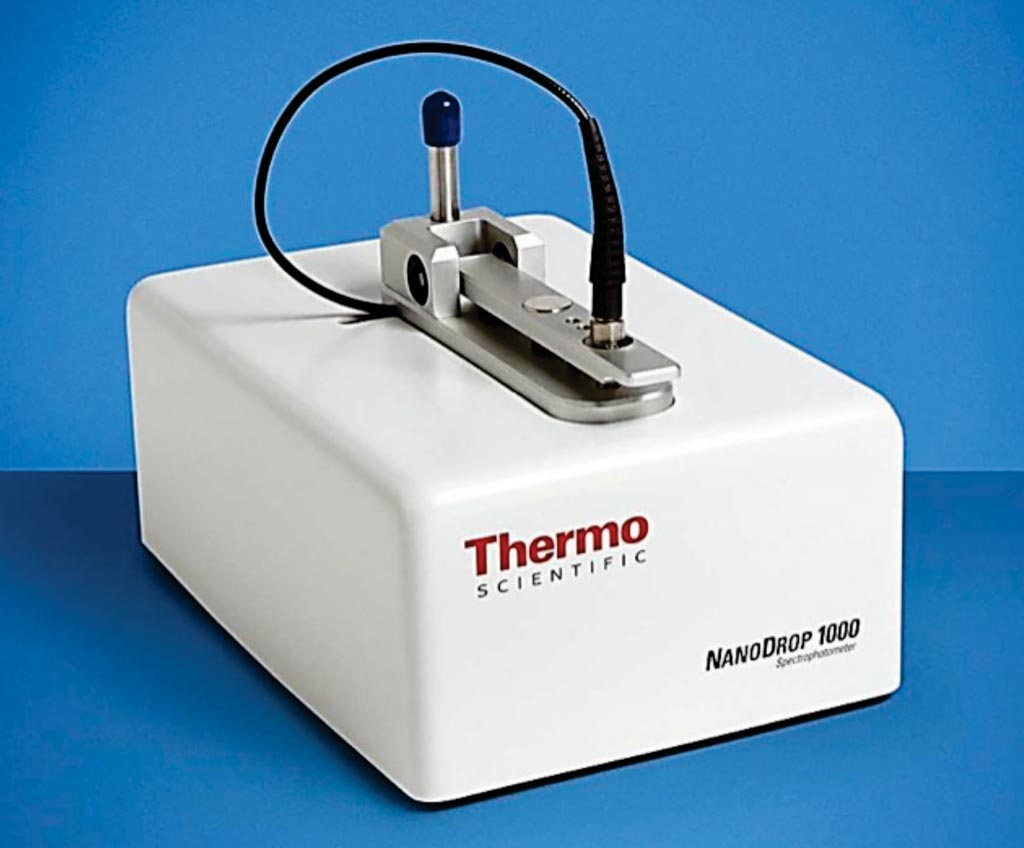Blood Test Predicts Prostate Tumor Resistance
By LabMedica International staff writers
Posted on 07 Sep 2017
Prostate cancer (PCa) is the most common cancer and the third leading cause of cancer death among European men. In metastatic PCa progression from a hormone-sensitive state to castration resistance under androgen deprivation therapy marks the transition to the lethal phenotype of the disease.Posted on 07 Sep 2017
Treatment resistance still poses a major challenge in metastatic castration-resistant PCa (mCRPC). Approximately one-third of patients show primary resistance to abiraterone and enzalutamide treatment without any decline in serum prostate-specific antigen (PSA) levels, and virtually all of the initial responders develop secondary resistance over time.

Image: The NanoDrop 1000 spectrophotometer used for quantification and purity assessment of RNA samples (Photo courtesy of Thermo Fisher Scientific).
A team of scientists at the Technical University of Munich (Germany) and their colleagues analyzed blood samples from 85 patients with advanced stages of prostate cancer. Blood samples were collected in PAXgene blood RNA tubes within one week before treatment initiation. Total RNA was extracted from blood samples according to the manufacturer's instructions using the Qiagen PAXgene blood RNA kit.
A NanoDrop 1000 spectrophotometer was used for quantification and purity assessment of RNA samples. Complementary DNA (cDNA) was synthesized from 1 μg of RNA using qScript XLT SuperMix. Androgen receptor splice variant 7 (AR-V7) and AR full length (AR-FL) messenger RNA (mRNA} levels were simultaneously quantified in a dual color assay using custom primer and hydrolysis probe sets on a QX200 ddPCR system with automatic droplet generation.
The team was able to successfully demonstrate that approximately one fifth of the patients had large amounts of AR-V7 RNA in their blood which was an indication of large quantities of resistant tumor cells. It was exactly these patients who failed to respond to therapy with abiraterone and enzalutamide. They also had poorer prognoses during the subsequent course of their illness. Their tumors returned more quickly and they had shorter survival times than other patients.
Silvia Thöne, PhD, co-lead author of the study said, “Only minute amounts of RNA are needed in a sample for the test to work. Additionally, since AR-V7 RNA is present in every tumor cell that possesses the resistant receptors, it means that no tumor cells are slipping by undetected.” The study was published on August 14, 2017, in the journal European Urology.













